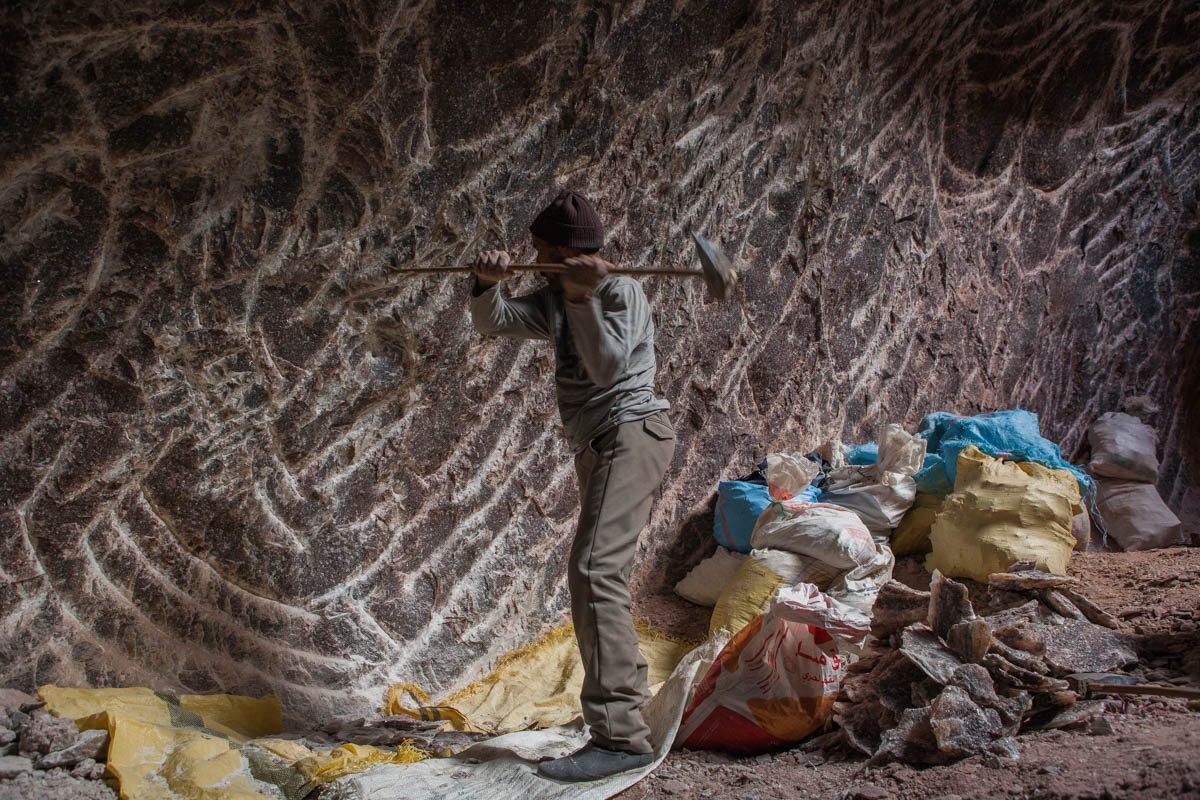Al Jazzerra
Sebastian Castelier
In the heights of Morocco’s Atlas mountains, sit three villages that have been part of the country’s salt-mining history since the end of the 18th century.
Perched at 2,000 metres above sea level, Ait-Daoud, Ait-Lahcen and Toumliline are the only mining villages of Tinghir Province.
Armed with their traditional pickaxes, about 100 self-employed salt miners go down into the mine six days a week for an average monthly wage of about $200. Most of the miners are over 40 years old.
Without helmets or any other safety equipment, injuries are common, many caused by landslides or falls out of alcoves that hang about 10 metres from the bottom of the mine.
Mining, once a respected profession, has now become a job for those who are desperate, according to Lhoussain Barhou, a teacher at Ait-Daoud’s primary school.
The low remuneration and harsh working conditions mean mining is no longer attractive to the younger generation.
“Children refuse to become miners, it’s too hard,” Barhou tells Al Jazeera.
“With school and college available, children have less and less desire to go to the mine, and more and more choose to go to cities,” he says.
Isolated and hit by a 16.1 percent male rural unemployment rate, Tinghir is seeing its youth leave the region to try their luck elsewhere in Morocco.
Over the past 60 years, the rural exodus has hit Morocco hard, reducing the countryside’s inhabitants from 70 to 40 percent of the total population.








